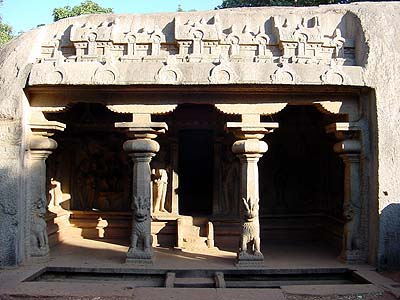In the 6th century BC, the Persians had a vast empire that stretched all the way from the Indus Valley to the northern region of Greece, and from Egypt to Central Asia. But Persia was unique. It was tolerant, accepting of other languages, faiths and political organizations. It was one (if not the) first multi-ethnic empires.
Not surprisingly, Persia is known for having one of the richest art histories in the world and thrived in all types of media from weaving to painting, architecture, metalworking, sculpture, pottery and more.
Themes and Motifs in Persian Art
Surviving ancient monuments from Persia depict mostly humans and animals. Humans were typically male and often royalty. Persian art focused more on figures than Islamic art from other regions.
Persian art is intensely ornate and often laid out in a geometric fashion. Motifs were combined harmoniously to create elegant pieces, with influences from various regions of the empire. Chinese motifs, like the cloud-band, were incorporated, and animals were often depicted on a much smaller scale than the plants surrounding them.
Persian Art Forms and Styles
The Persians mastered numerous art forms and styles from pottery to ceramics, metalworking, miniature paintings, and sculptures.
Pottery and Rock Reliefs
Archaeologists have discovered evidence of pottery-painted civilization located near Susa that date back to 5000 BC. Rock reliefs have also been discovered that date back as far as 500 BC.

Reliefs were typically placed beside roads and near water sources, and were used as a way to glorify the Persian king, Elamite and Lullubi were the first to create reliefs, and the practice continued under the Assyrians and beyond.
Persian Miniature
The Persian miniature, a small painting on paper, was another popular art form. The art may have been featured in a book as an illustration, or it may have been a separate  piece intended to keep in an album of miniature works, referred to as a muraqqa. The techniques used to create the Persian miniature were very similar to the Byzantine and Western traditions of the miniatures in illuminated manuscripts.
piece intended to keep in an album of miniature works, referred to as a muraqqa. The techniques used to create the Persian miniature were very similar to the Byzantine and Western traditions of the miniatures in illuminated manuscripts.
Ceramics
Persian ceramics took inspiration from Chinese porcelain. Pieces featured Chinese motifs and forms, such as dragons and chi clouds, and were typically painted in blue and white.
Numerous types of ceramics were produced by the Persians, including plates, flasks, spittoons and goblets. Flask shapes were typically flat on one side and rounded on the other with small necks. The shapes were generally inspired by Islamic metalwork, while the decoration was borrowed from Chinese porcelain.
Persian Carpets
Persia is, perhaps, best-known for its carpet weaving, which is still an essential part of the art and culture. Persian rugs are known for their elaborate designs, which is what sets them apart from their peers.
Persian carpets and rugs are woven in parallel, typically in local workshops by nomadic tribes. Each region has its own customary styles and themes.
While carpet weaving has seen its fair share of ups and downs throughout history, it still play a major role in the modern Iran economy.
Despite the Persian Empire’s fall around 465 BC, its rich art history still influences modern art today. While Persia may be best-known for its ornate carpets and rugs, the empire produced some of the most impressive miniature paintings, metalworking pieces and sculptures of its time.


